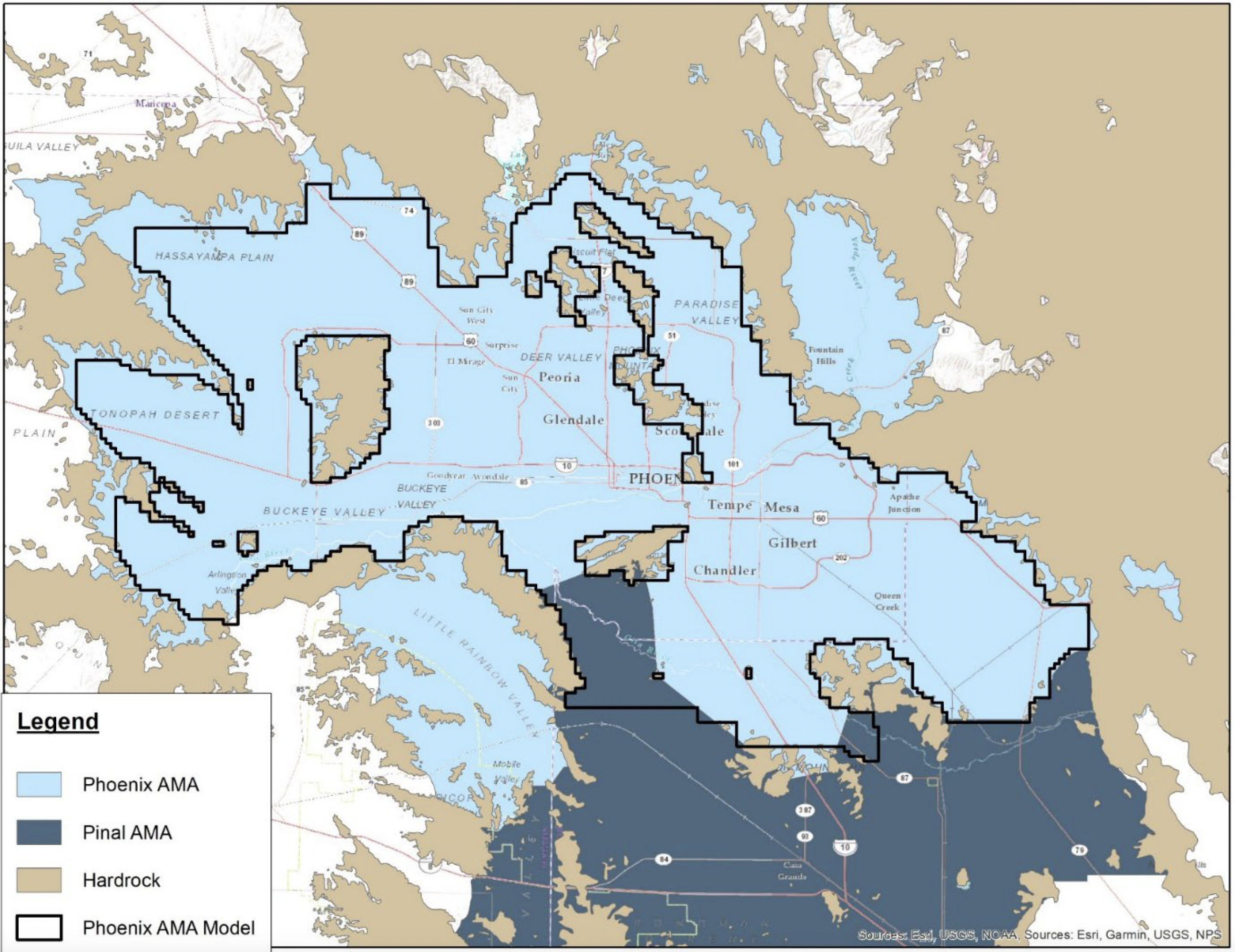
New Phoenix AMA Model Shows Limits of Groundwater as an Assured Water Supply
Key Points
• Results of a new groundwater model show that all of the physically available groundwater in the Greater Phoenix area is fully allocated.
• This will not impact new development within the service area of water providers with a Designation of an Assured Water Supply (DAWS), the vast majority of Phoenix-area communities. In addition, the model results will not impact subdivisions with a Certificate of Assured Water Supply.
• In areas outside the service area of a water provider with a DAWS, proposed subdivision developments will not be permitted without proof of a 100-year water supply that is not local groundwater.
• The model results show that Arizona’s 1980 Groundwater Management Act is working as intended, but the stresses of climate change and the overallocation of the Colorado River will require additional mitigation, adaptation, and innovation.
Background
As part of its Assured Water Supply Program, the Arizona Department of Water Resources (ADWR) recently released a new groundwater model covering the Hassayampa and East and West Salt River Valley Sub-basins of the Phoenix Active Management Area (AMA). This "Phoenix AMA Model" projects an "unmet demand" (or shortage of physically available groundwater) after 100 years (by 2121) of 4.86 million acre-feet (MAF). Because the groundwater supply is insufficient to meet the demands of existing and permitted uses, any proposed housing development located in one of these sub-basins will not be able to obtain a Certificate of Assured Water Supply (CAWS) based on AMA groundwater.
The results have little impact on a city, town or private water company (“municipal water provider”) designated by ADWR as having an Assured Water Supply. These designations are based primarily on a mix of surface water supplies and reclaimed wastewater and a smaller amount of groundwater.

What is an Assured Water Supply?
An Assured Water Supply is a determination by ADWR that:
1) Sufficient water of adequate quality will be physically, continuously and legally available to satisfy water needs for at least 100 years,
2) Any projected groundwater use is consistent with the management plans and achievement of Safe Yield for the AMA and
3) Financial capability has been demonstrated to construct necessary facilities to treat and distribute water to customers.
What water uses are required to show an Assured Water Supply?
• In the Phoenix AMA, ADWR has designated 15 municipal providers, including Phoenix and all of the AMA’s large cities, as having an Assured Water Supply. A Designation of Assured Water Supply applies to all current, committed and future uses of water served by the municipal provider. ADWR reviews every designation at least every 15 years to determine whether it should be modified or revoked, making the 100-year mark a rolling time-frame. Two high-growth Phoenix-area communities that do not have a DAWS are the City of Buckeye and the Town of Queen Creek.
• Outside of the service area of a municipal water provider with a DAWS, the developer of a subdivision – land divided into six or more lots – located in an AMA must obtain a Certificate of Assured Water Supply ("CAWS") before offering lots in the subdivision for sale. Developers of subdivisions in these areas have typically relied on local groundwater to obtain a CAWS. That path will no longer be available.
Does the new groundwater model mean that Phoenix area growth will stop?
Growth will continue, but the pattern and rate of growth will likely change. Growth on groundwater will be slowed.
Planned subdivisions that have already received a CAWS will be allowed to be built, but developers of proposed subdivisions will need to rely on supplies other than local groundwater to obtain a CAWS.
Historically, subdivision developers in Central Arizona have often preferred less-expensive land located outside of the service areas of water providers with a DAWS because they could obtain a CAWS based on unallocated groundwater. Now developers will need to weigh developing on more expensive land within these service areas against the cost of developing water supplies other than local groundwater.
Municipal water providers with a DAWS (including Phoenix and most of the AMA's large cities) may continue to serve new subdivisions and other new water uses, such as apartments and industries. As ADWR reviews a water provider’s DAWS, it will not increase the amount of groundwater included in the DAWS.
Municipal water providers lacking a DAWS may continue to use groundwater to serve new uses other than housing subdivisions. They may also acquire non-local groundwater supplies to serve new subdivisions.
What mitigation and adaptation strategies are available?
Central Arizona municipal water providers will continue to adapt to ensure sufficient and resilient water supplies.
Past successes include significant reductions in the use of water per capita through conservation, the extensive use of reclaimed water, development of diverse water portfolios that include Colorado River water and local Salt & Verde River water, the banking of Colorado River and reclaimed water underground in local aquifers and collaborative regional planning that includes leases and exchanges of both water and infrastructure.
Additional adaptations may include enhanced conservation, land-use planning that includes incentivizing development on lands with better access to renewable surface water supplies, new and innovative regional partnerships to exchange and lease water and leverage infrastructure between municipal water providers, new infrastructure to treat and deliver wastewater as drinking water, increasing the capacities of local reservoirs, transferring high-priority Colorado River water into Central Arizona via purchase or lease and importation of new water supplies such as desalinated ocean water or brackish groundwater.